Toilet Cleaning Checklist Samples
-
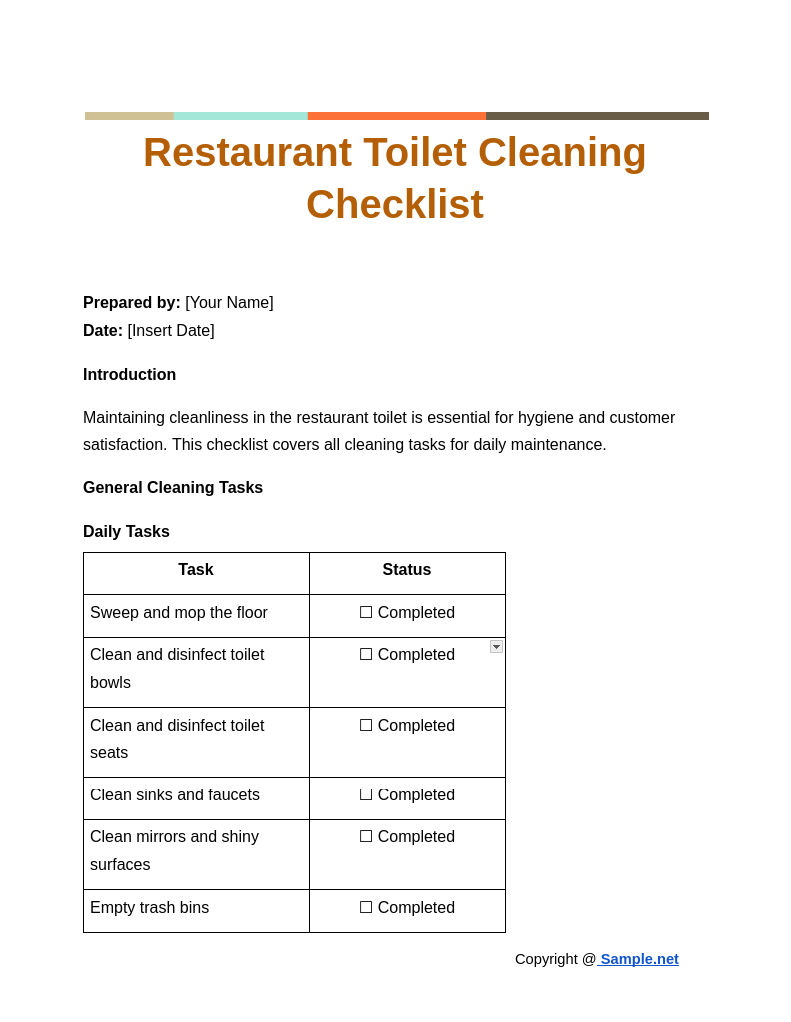
Restaurant Toilet Cleaning Checklist
download now -
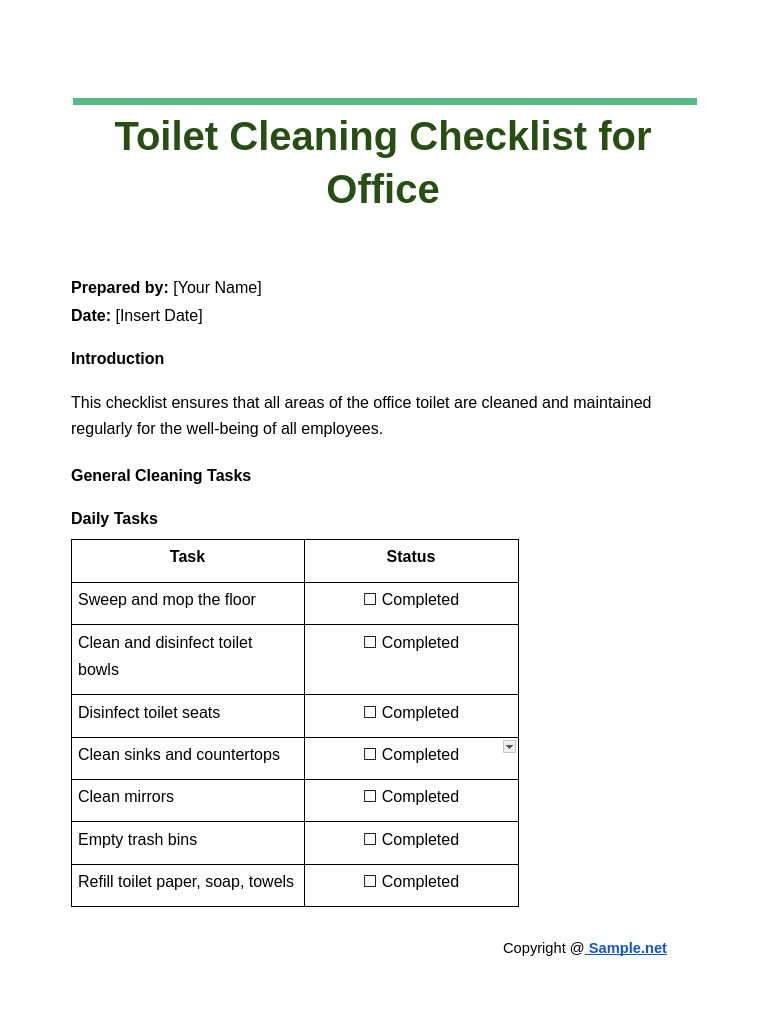
Toilet Cleaning Checklist for Office
download now -
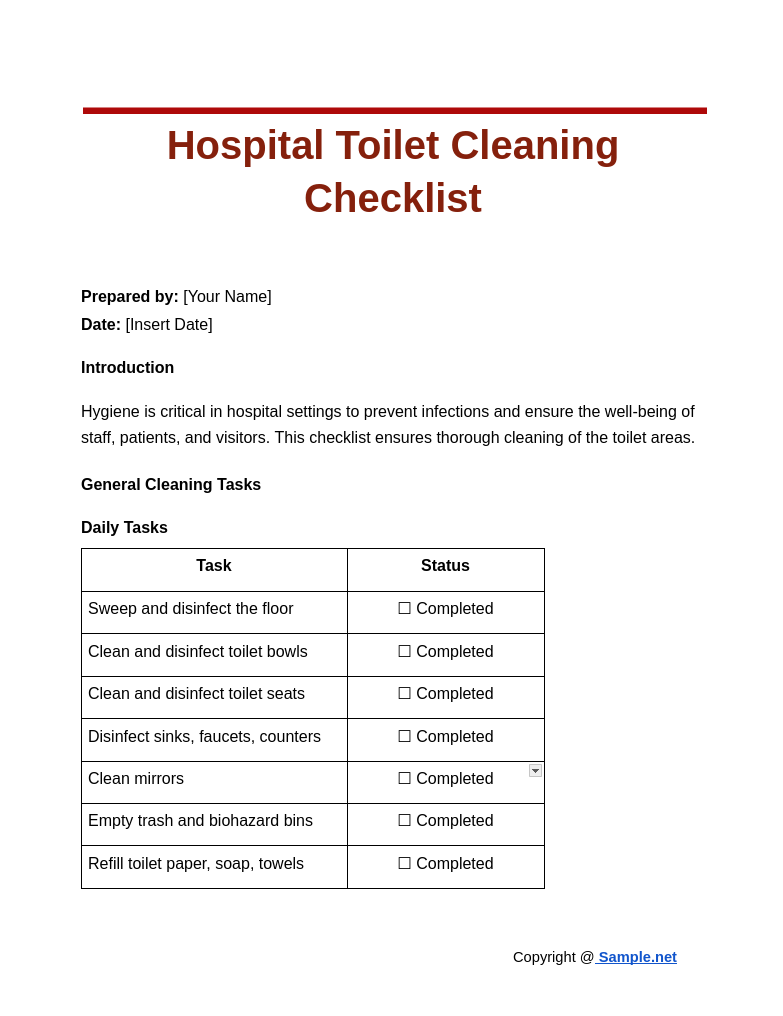
Hospital Toliet Cleaning Checklist
download now -
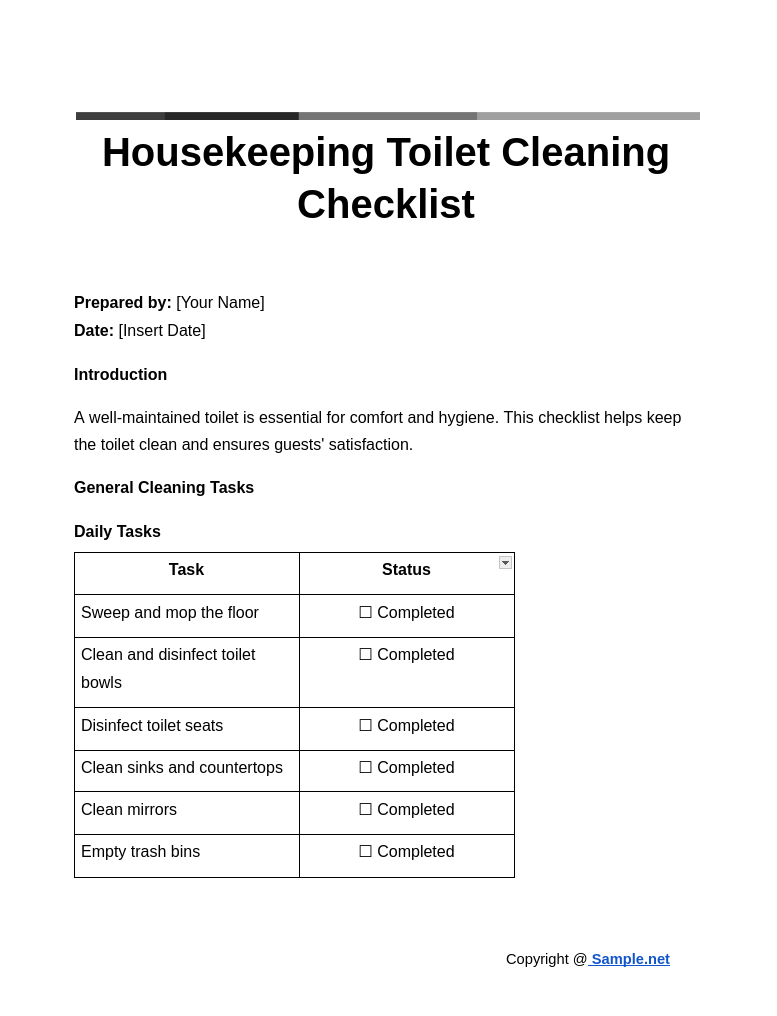
Housekeeping Toilet Cleaning Checklist
download now -

Daily Restroom Cleaning Checklist
download now -

Sample Restroom Cleaning Checklist
download now -

Restroom Cleaning Checklist
download now -
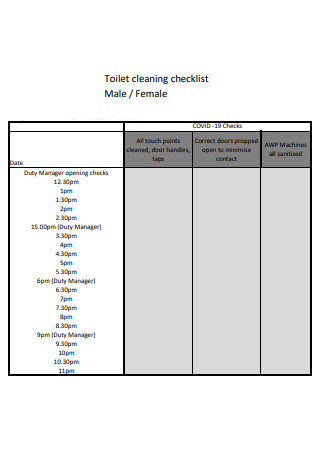
Toilet cleaning checklist
download now -
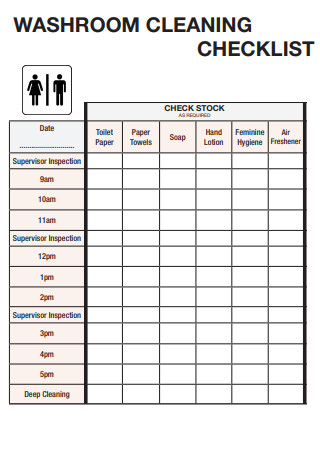
Washroom cleaning checklist
download now -

Detailed Printable Bathroom Cleaning Checklist
download now -
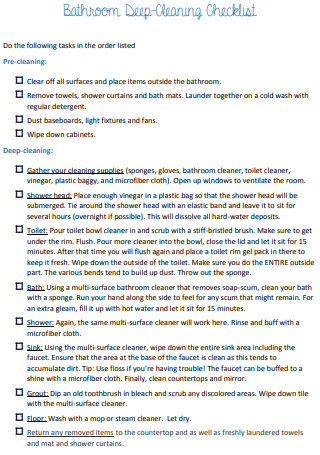
Bathroom Deep Cleaning Checklist
download now -
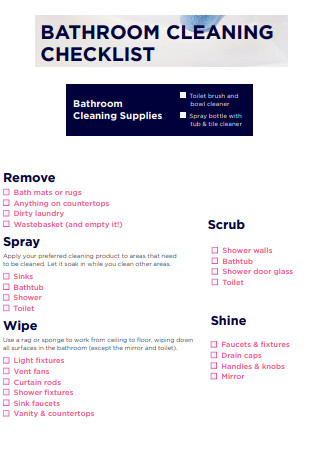
Bathroom Cleaning Checklist
download now -
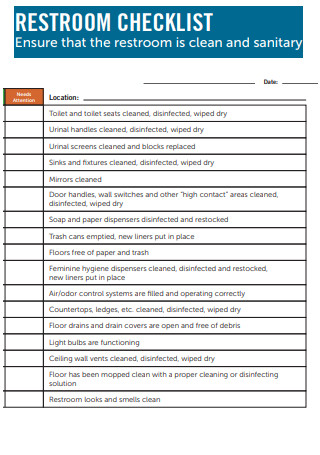
Restroom Cleaning And Sanitary Checklist
download now -
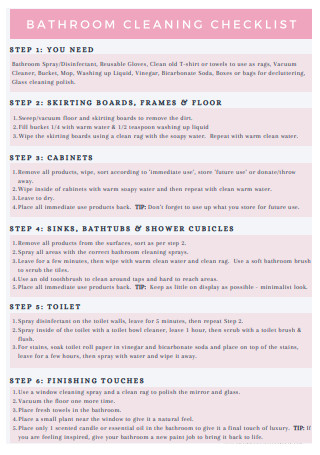
Sample Bathroom Cleaning Checklist
download now -
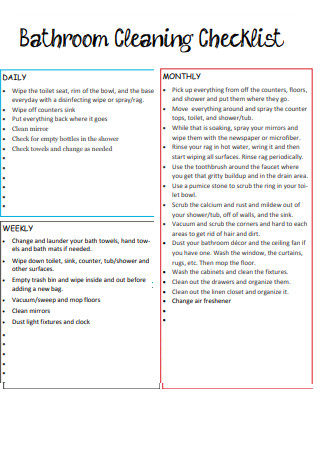
Bathroom Cleaning Checklist for Daily, Monthly, Weekly
download now -
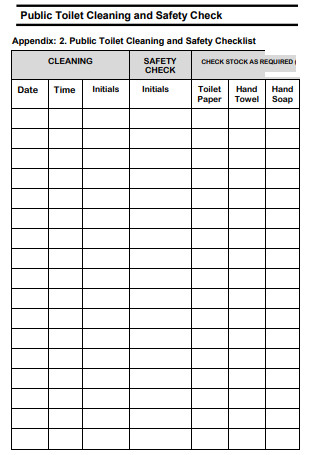
Public Toilet Cleaning and Safety Checklist
download now -
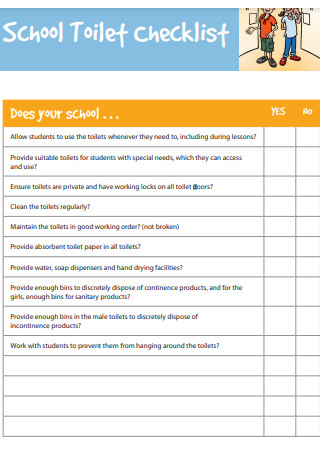
School Toilet Cleaning Checklist
download now -

Bathroom Cleaning And Disinfecting Checklist
download now -
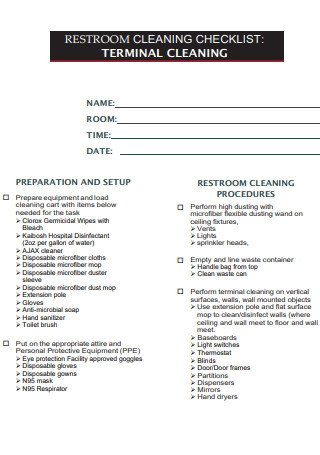
Restroom Terminal Cleaning Checklist
download now -
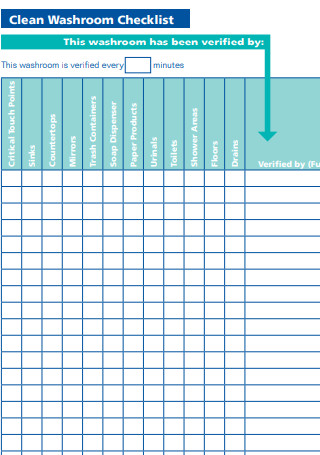
Clean Washroom Checklist
download now -
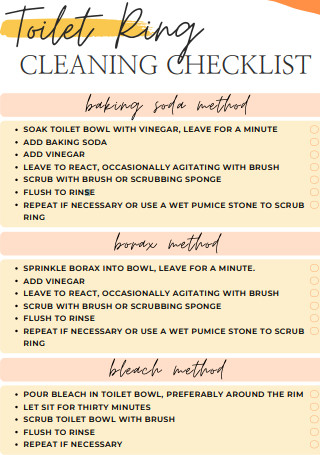
Toilet Ring Cleaning Checklist
download now -
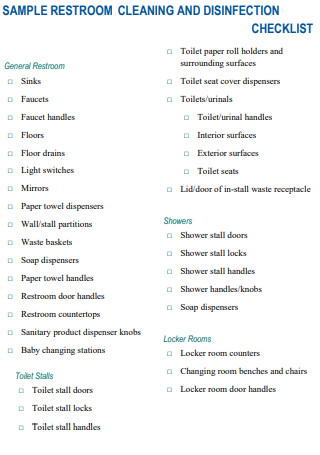
Sample Restroom Cleaning And Disinfection Checklist
download now -
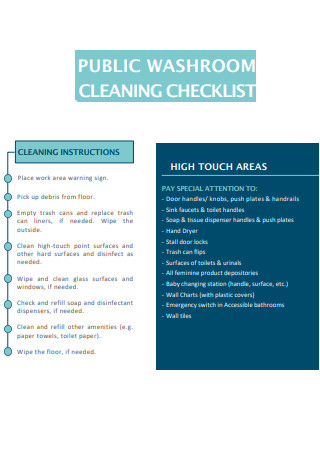
Public Washroom Cleaning Checklist
download now -
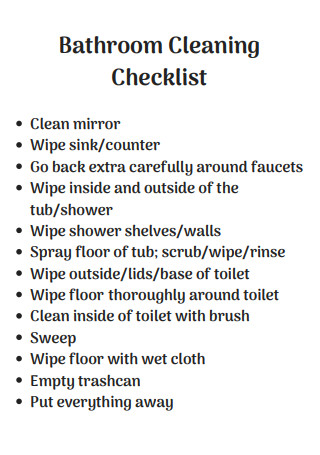
Simple Bathroom Cleaning Checklist
download now
FREE Toilet Cleaning Checklist s to Download
Toilet Cleaning Checklist Format
Toilet Cleaning Checklist Samples
a Toilet Cleaning Checklist?
Benefits of Maintaining a Clean Toilet
How To Create a Cleaning Schedule
FAQs
Why is cleaning necessary?
Are house cleaners cost effective?
How often should the toilets be cleaned?
What should be done in case of a plumbing issue during cleaning?
How can we ensure consistent quality in toilet cleaning?

Download Community Project Proposal Bundle
Toilet Cleaning Checklist Format
Date: [Insert Date]
Cleaner’s Name: [Insert Name]
| Task | Completed (Yes/No) | Comments |
|---|---|---|
| 1. Sweep the floor | ||
| 2. Clean the toilet bowl | ||
| 3. Disinfect toilet seat | ||
| 4. Wipe mirrors | ||
| 5. Scrub and clean sink | ||
| 6. Empty trash bin | ||
| 7. Refill toilet paper | ||
| 8. Refill soap dispenser | ||
| 9. Clean door handles | ||
| 10. Mop the floor | ||
| 11. Check for any repairs | ||
| 12. Air freshener applied |
Supervisor’s Signature: [Insert Signature]
What Is a Toilet Cleaning Checklist?
A toilet cleaning checklist is a list of tasks used to maintain and service bathrooms. It can be brief or detailed. Toilet cleaning is critical for every household, as this is where the majority of hygiene issues occur. To accomplish this systematically, you can utilize the toilet cleaning schedule templates readily available for download. The top bathroom cleaning schedule template is a must-have, from taking notes on maintenance work and recording details to determining the dates and times for cleaning specific parts. Today, just 68% of the world’s population has access to adequate sanitation, falling short of the target of 77%. According to the survey, most persons who lack proper toilets and defecate in public dwell in South Asia and Sub-Saharan Africa.
Benefits of Maintaining a Clean Toilet
The toilet is a vital part of our lives that we should strive to keep clean. Keeping restrooms clean will assist us in maintaining germs under control. Germs are capable of causing a variety of diseases. Toilets must be sanitized because they are where we deposit our wastes. If we are not careful, bacteria and germs can quickly spread to other areas of our homes. Toilets should be sanitized regularly. If restrooms are not kept clean in an office, it is likely to harm productivity. You can also check office cleaning proposals. This can result in illness, which results in employee absenteeism. We examine several of the benefits of maintaining a clean toilet.
How To Create a Cleaning Schedule
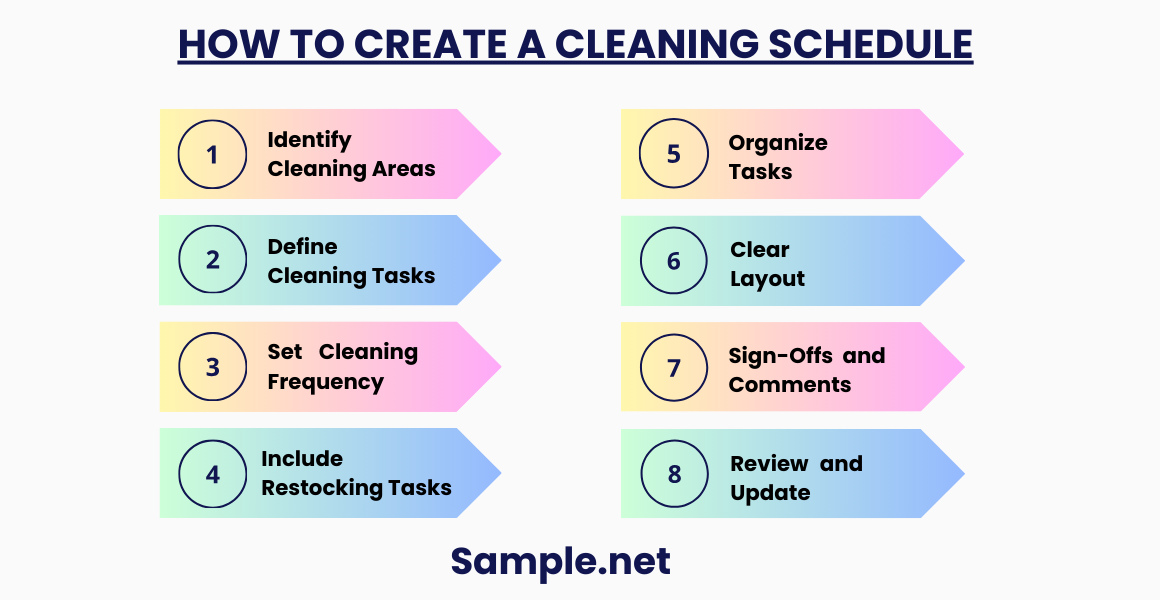
Step 1: Identify Cleaning Areas
List all the areas in the toilet that need to be cleaned. Typical areas include:
- Toilet bowls and seats
- Urinals (if applicable)
- Sinks and faucets
- Mirrors
- Floors
- Walls (especially near sinks)
- Soap dispensers and hand dryers
- Toilet paper and paper towel holders
- Trash bins
- Door handles, locks, and partitions
Step 2: Define Cleaning Tasks for Each Area
Specify the cleaning tasks required for each identified area. For example:
- Toilet Bowls and Seats: Scrub with toilet cleaner, disinfect seat and flush handle.
- Sinks and Faucets: Clean basin, disinfect faucet, wipe down counters.
- Floors: Sweep, mop with disinfectant.
- Mirrors: Clean with glass cleaner to remove smudges.
Step 3: Set Cleaning Frequency
Determine how often each task should be done. For example:
- Toilet bowls: Daily or as needed depending on traffic.
- Sinks and faucets: Daily.
- Trash bins: Emptied daily or when full.
- Floors: Swept and mopped daily.
Step 4: Include Restocking Tasks
Add tasks for restocking supplies such as:
- Toilet paper
- Hand soap
- Paper towels or refilling hand dryers
Step 5: Organize Tasks by Time Intervals
Create sections in your checklist for daily, weekly, and monthly tasks. This ensures clarity about which tasks should be done at each cleaning interval.
- Daily Tasks: Clean toilets, sinks, floors, empty trash bins, restock supplies.
- Weekly Tasks: Deep clean toilet bowls, scrub walls, disinfect partitions.
- Monthly Tasks: Check plumbing, perform deep cleaning of hard-to-reach areas.
Step 6: Create a Clear Layout
Format the checklist with columns for:
- Task (e.g., Clean toilet bowls)
- Area (e.g., Toilets)
- Frequency (e.g., Daily, Weekly)
- Completed (Checkmark or space for staff to sign off)
Step 7: Add Space for Sign-Offs and Comments
Ensure each task has a space for the cleaning staff to mark the checklist as completed and to leave comments, such as issues encountered or supplies needed.
Step 8: Review and Update
Periodically review the checklist based on feedback from staff or changes in cleaning requirements. Adjust frequencies or tasks as needed.
By following this toilet cleaning checklist, we ensure that our restroom facilities remain in excellent condition, providing a clean and hygienic environment for all users. Regular cleaning and proper maintenance not only contribute to the overall appearance and functionality of the space but also help in preventing health-related issues. It is essential to adhere to this checklist consistently to uphold the highest standards of cleanliness and hygiene. You can also see more on Daily Cleaning Checklists.
FAQs
Why is cleaning necessary?
The primary reason for maintaining a clean house is health. Whatever occurs in your home affects your living environment, directly affecting your and your family’s health. As a result, house cleaning should be a top priority. You can avoid being ill, avoid allergic reactions, and avoid asthma attacks simply by cleaning regularly. Cleaning is critical for pets: all that pet dander flying around is a recipe for disaster. Add dust mites and mold to the mix, and it’s game over for the immune system. Cleaning removes germs and debris, and dust, resulting in improved indoor air quality and a smell of freshness. Generally, the kitchen and bathroom demand special attention, as they are among the most germ-infested areas of any home. Another reason to maintain your home friendly and order are to avoid tripping or occupants injuring themselves accidentally if there is too much odd material lying around. This is particularly harmful to children.
Are house cleaners cost effective?
It may seem like the ultimate luxury to hire a maid or a house cleaning service for many of us. Time is indeed money, and scrubbing the kitchen floor could be better spent elsewhere. It’s a lost opportunity cost to use an economics word.
How often should the toilets be cleaned?
The frequency depends on the foot traffic and type of facility. Generally, high-traffic areas should be cleaned multiple times a day, while others might only need cleaning once or twice daily. Restrooms in restaurants, schools, and malls often require more frequent cleaning.
What should be done in case of a plumbing issue during cleaning?
The checklist should have a section where cleaning staff can report any issues, such as leaks, broken fixtures, or plumbing problems. These issues should be promptly reported to the maintenance team for quick resolution.
How can we ensure consistent quality in toilet cleaning?
Consistency can be achieved by having clear instructions in the checklist, regularly reviewing the checklist with staff, conducting surprise inspections, and providing feedback to staff to improve the cleaning process.
